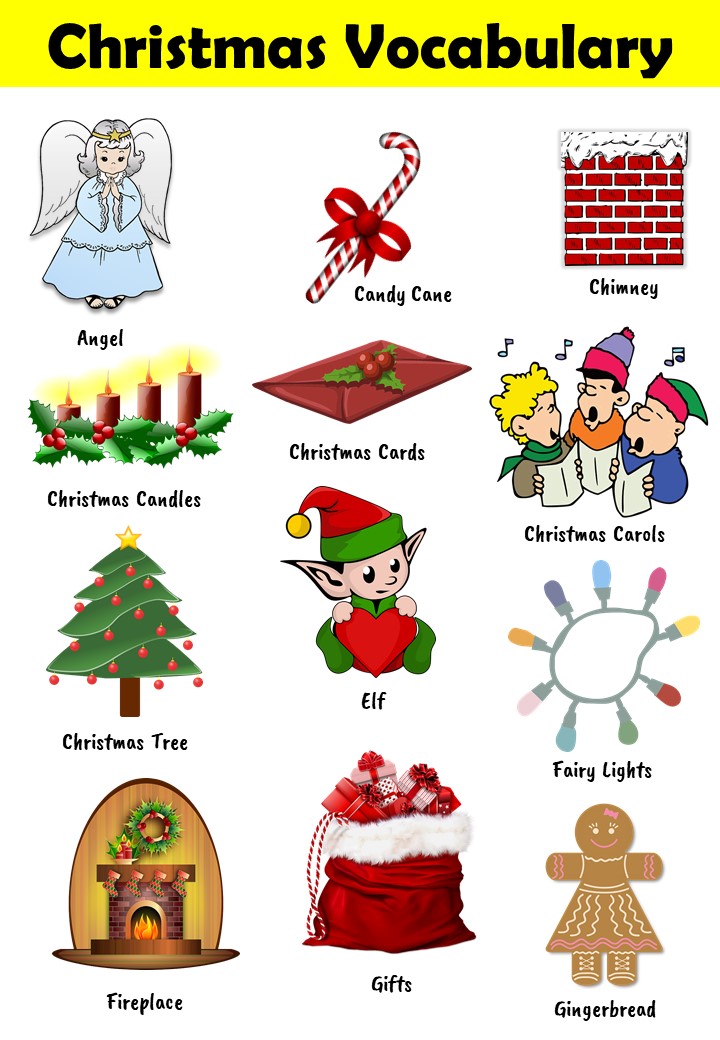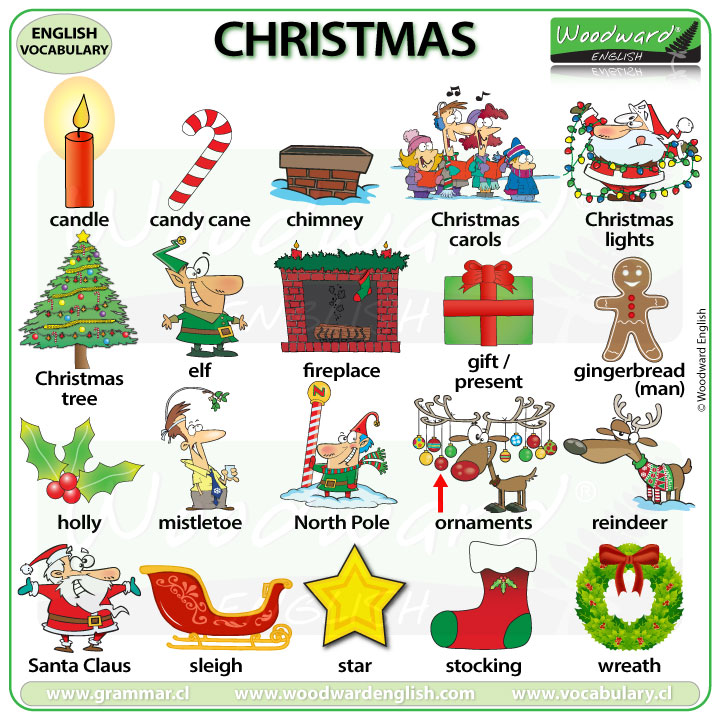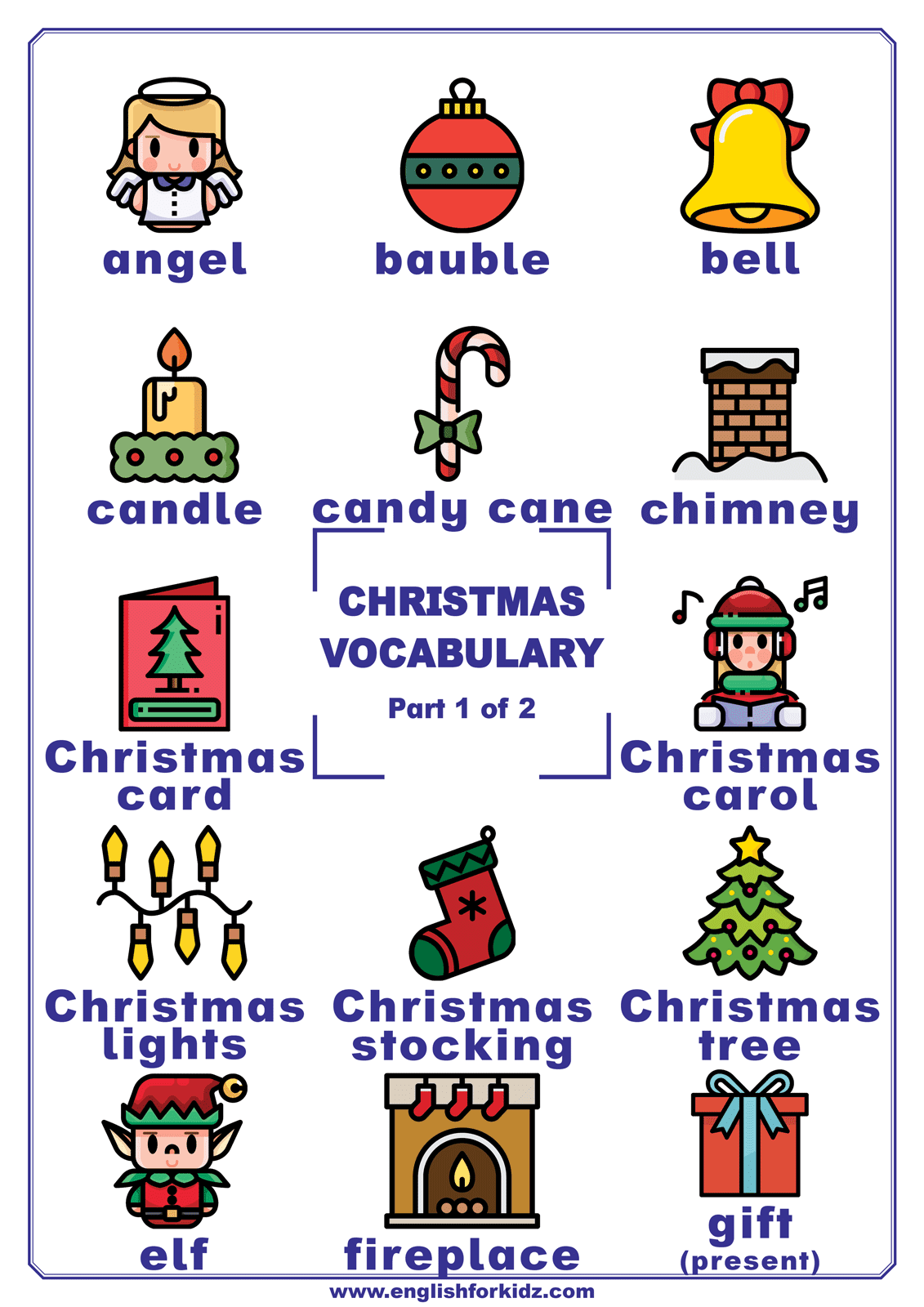A Comprehensive Guide To Christmas Vocabulary: Embracing The Festive Lexicon
A Comprehensive Guide to Christmas Vocabulary: Embracing the Festive Lexicon
Related Articles: A Comprehensive Guide to Christmas Vocabulary: Embracing the Festive Lexicon
Introduction
With enthusiasm, let’s navigate through the intriguing topic related to A Comprehensive Guide to Christmas Vocabulary: Embracing the Festive Lexicon. Let’s weave interesting information and offer fresh perspectives to the readers.
Table of Content
A Comprehensive Guide to Christmas Vocabulary: Embracing the Festive Lexicon

The Christmas season is a time of celebration, joy, and tradition. It is also a time when our vocabulary expands to encompass the unique language of this festive period. From the evergreen trees to the twinkling lights and the joyous carols, Christmas evokes a specific set of words and phrases that capture the essence of the season.
This article aims to provide a comprehensive exploration of Christmas vocabulary, delving into its origins, nuances, and significance. We will explore various categories of Christmas words, including:
1. Christmas Decorations and Traditions:
- Evergreen: This term refers to trees and plants that remain green throughout the year, symbolizing life and resilience during the winter months. The most common evergreen used for Christmas is the pine tree, often decorated with ornaments, tinsel, and lights.
- Wreath: A circular arrangement of evergreen branches, often adorned with berries, bows, and candles, symbolizing eternity and the cyclical nature of life.
- Advent Calendar: A calendar with 24 small doors, each revealing a small gift or treat, counting down the days until Christmas.
- Mistletoe: A parasitic plant traditionally hung upside down for kissing under, symbolizing peace and good luck.
- Stocking: A long, sock-like container hung by the fireplace for Santa Claus to fill with gifts.
- Carol: A festive song, often religious in nature, sung during the Christmas season.
- Yule Log: A large log traditionally burned in the fireplace on Christmas Eve, symbolizing warmth, comfort, and the spirit of the season.
2. Christmas Food and Drink:
- Gingerbread: A spiced cookie, often shaped in festive forms like houses or men, that is a popular Christmas treat.
- Eggnog: A creamy, spiced drink made with milk, eggs, sugar, and often liquor.
- Mulled Wine: A warm, spiced wine, often infused with cinnamon, cloves, and orange peel.
- Roast Turkey: A traditional Christmas dinner centerpiece, often served with stuffing, gravy, and cranberry sauce.
- Christmas Pudding: A rich, dense fruitcake steamed and traditionally served with brandy butter.
3. Christmas Characters and Figures:
- Santa Claus: The mythical figure who delivers gifts to children on Christmas Eve, known for his red suit, white beard, and jolly demeanor.
- Elf: A small, magical creature who assists Santa Claus in making toys and preparing for Christmas.
- Reindeer: The magical deer that pull Santa’s sleigh, known for their antlers and ability to fly.
- Snowman: A figure made from snow, often with a carrot nose, coal eyes, and a hat, symbolizing the joy of winter.
4. Christmas Religious Terms:
- Nativity: The birth of Jesus Christ, celebrated on Christmas Day.
- Manger: The feeding trough where Jesus was born.
- Star of Bethlehem: The star that guided the Three Wise Men to the birthplace of Jesus.
- Angel: A celestial being often associated with Christmas, symbolizing divine guidance and protection.
- Christmas Eve: The evening before Christmas Day, traditionally a time for family gatherings and religious services.
5. General Christmas Words:
- Festive: Relating to or characterized by celebration and joy.
- Merry: Cheerful and joyful, especially during Christmas.
- Gift: A present given as a token of love, appreciation, or friendship.
- Joy: A feeling of great happiness and contentment.
- Peace: A state of tranquility and harmony, often associated with Christmas.
6. Christmas Greetings and Phrases:
- Merry Christmas: The most common Christmas greeting, expressing joy and good wishes.
- Happy Holidays: A more inclusive greeting that acknowledges different holiday traditions.
- Season’s Greetings: A general greeting for the holiday season.
- Peace on Earth, Good Will to Men: A traditional Christmas message promoting peace and goodwill.
- Jingle Bells: A popular Christmas carol, often associated with sleigh rides and winter fun.
Importance of Christmas Vocabulary:
Beyond simply adding festive flair to our language, Christmas vocabulary plays a significant role in shaping our understanding and celebration of the season. It allows us to communicate specific ideas and emotions related to Christmas, fostering a shared sense of tradition and cultural identity. The words we use to describe Christmas decorations, food, and characters contribute to the unique atmosphere and spirit of the holiday.
FAQs about Christmas Vocabulary:
Q: What is the origin of the word "Christmas"?
A: The word "Christmas" is derived from the Old English phrase "Cristes mæsse," meaning "Christ’s Mass."
Q: Why are evergreen trees associated with Christmas?
A: Evergreen trees symbolize life and resilience, representing the enduring spirit of Christmas even during the winter months.
Q: What is the significance of the color red in Christmas?
A: Red is associated with the blood of Christ, representing his sacrifice and the spirit of giving.
Q: How did Santa Claus become associated with Christmas?
A: The figure of Santa Claus evolved from the historical figure of Saint Nicholas, a 4th-century bishop known for his generosity and kindness.
Q: Why is Christmas celebrated on December 25th?
A: The date of December 25th was chosen to coincide with the Roman festival of Saturnalia, a celebration of winter solstice and rebirth.
Tips for Using Christmas Vocabulary:
- Be mindful of your audience: Consider the context and appropriateness of certain terms, especially when using religious vocabulary.
- Use specific vocabulary to evoke specific emotions: For example, "sparkling" evokes a sense of wonder, while "cozy" conveys warmth and comfort.
- Avoid clichés: While some Christmas phrases are traditional, try to use more descriptive language to make your writing more engaging.
- Embrace the joy of the season: Use Christmas vocabulary to express your own feelings of joy, love, and generosity.
Conclusion:
Christmas vocabulary is more than just a collection of festive words. It is a language that reflects the traditions, values, and emotions associated with this special time of year. By understanding the origins and nuances of these words, we can better appreciate the rich cultural tapestry of Christmas and engage in meaningful conversations about this beloved holiday. As we celebrate the season, let us embrace the power of language to connect us to the spirit of Christmas and its timeless message of hope, joy, and peace.








Closure
Thus, we hope this article has provided valuable insights into A Comprehensive Guide to Christmas Vocabulary: Embracing the Festive Lexicon. We appreciate your attention to our article. See you in our next article!
Leave a Reply